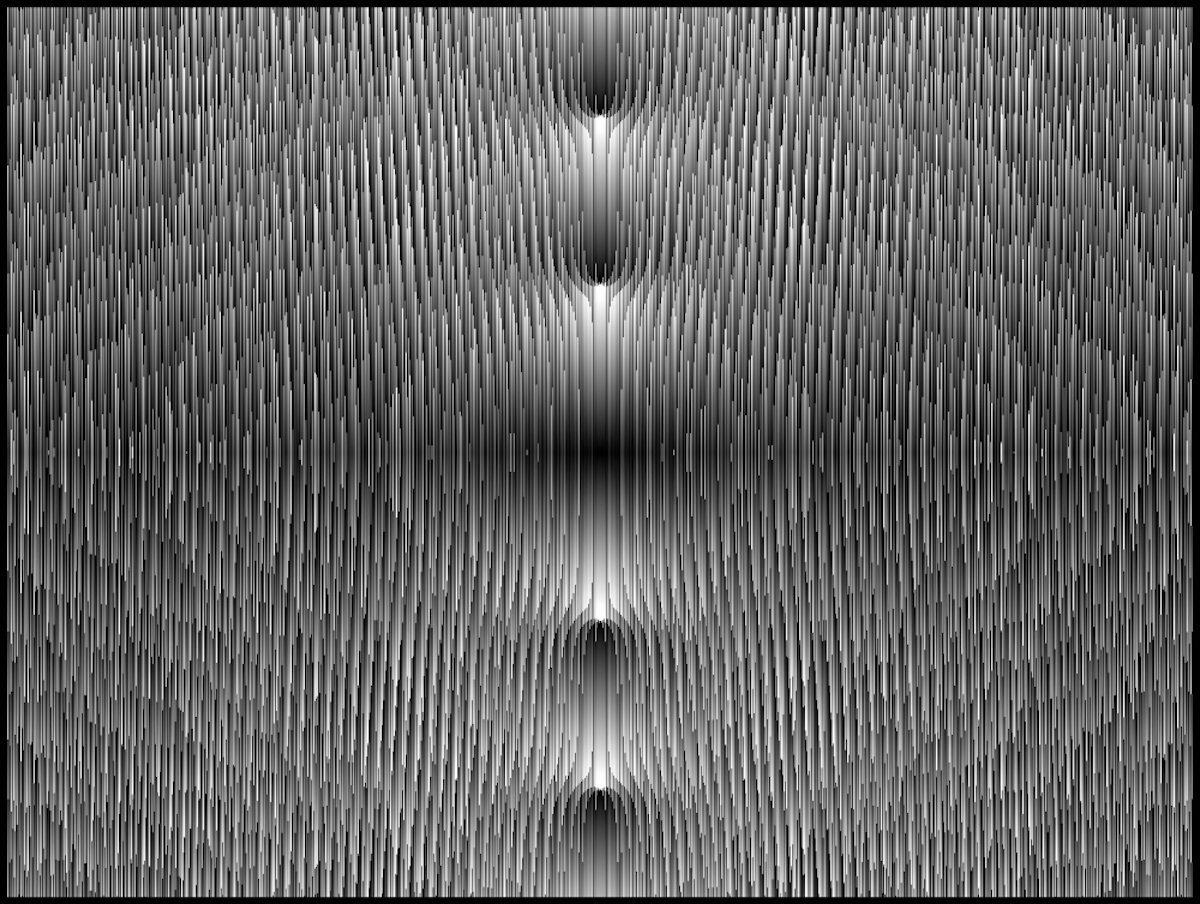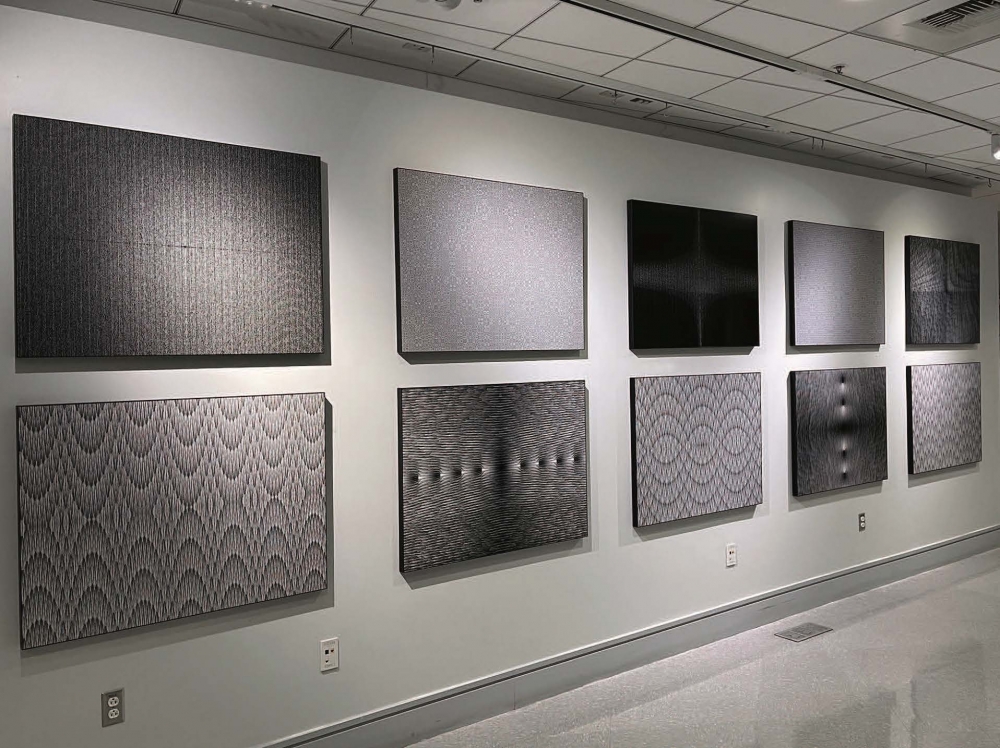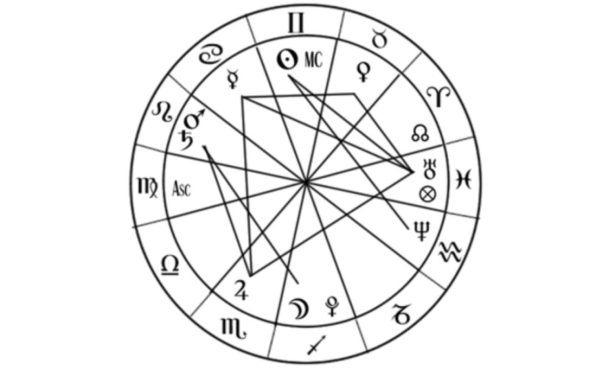Making Waves at UC Santa Barbara
Media Arts and Technology Professor George Legrady Exhibits New Algorithmic Art

This story was originally published in UCSB’s The Current.
It was an earworm that lasted four dozen years, but it wasn’t a jingle, it was an algorithm. An equation George Legrady came across in 1986 in Scientific American has captured his imagination again and again ever since. In 2021, he returned to it once more to create “Phantom Waves,” a series of images exploring the intersection of digital photography and math, now on view in the California Nanosystems Institute on the second floor of Elings Hall at UC Santa Barbara.
“Every once in a while, I come back to this, how to use math equations to create aesthetically interesting results,” said Legrady, distinguished professor of media art and technology. “The minute you digitize a photograph, it’s really not a photograph anymore; it’s just a string of numbers. The other thing about digitality is you can move data from one domain to another. You can turn data into a sound or an image because it’s just numbers.”
Published in the article “Computer Recreations” by A.K. Dewdney, the algorithm in Scientific American that inspired Legrady employs frequency modulation. In physics, it’s signal processing, but for Legrady, it’s an aesthetic device. Writing in C language on an IBM personal computer, his experimentation in the ’80s brought new forms of photographic visualization. Some of it was made possible by technological developments such as the Truevision Targa analog-to-digital graphics board, which was the first to allow artists to manipulate photographs with code. Every six or so years since, Legrady has returned to this algorithm to see what he can do with the latest technology.
His new work utilizes the 1986 equation along with custom software, capturing in still images the oscillations of various frequencies that modulate each other, creating complex patterns. The algorithm works by creating the frequency modulation: A sine wave frequency with a value is sent from left to right. At the same time, another sine wave with a different frequency value is sent from top to bottom. The two waves intersect at each pixel creating numeric values, resulting in harmonics, many times outside of the 0–255 color range from black to white. Legrady explained that he then “recycles the out of bounds values to get different results.”
“The patterns emerge through phantom frequencies generated when the signal goes beyond the tonal range of individual pixels,” Legrady said. “This series brings attention to the nature of the digital photograph as fundamentally a sequence of numbers that can be manipulated mathematically to result in images that do not exist in the world but are produced algorithmically. The series is a project in generative art, an iterative human-software collaboration where the artist selects numeric parameters by which the software generates tonal values for each pixel within the two-dimensional image space.”
In part, Legrady was inspired by the electronic music compositions of Iannis Xenakis and other 20th century composers. “Phantom Wave” images are visual expressions resulting from tweaking oscillating frequencies applied to pixels within a two-dimensional matrix space. The objective, Legrady explained, was “to arrive at images that could not have been realized without computation and mathematical modeling.”
Creating symmetrical and monochromatic strings of pixels and patterns, Legrady’s “Phantom Waves” images explore digital photography through the lens of mathematical equations.
“Why do we believe in the photograph when it is a constructed image? It is not a true image,” said Legrady, who also directs UCSB’s Experimental Visualization Lab. “With digital technology it’s totally manipulated and processed.”
Sign up for Indy Today to receive fresh news from Independent.com, in your inbox, every morning.
The recent works were inspired by experimentation Legrady undertook in his spare time over COVID-19. He also noted that in the years between 2000 and 2016 he was working with collaborators on complex data collection and analysis. Then, in 2020, he had an art installation canceled in Beijing because of the pandemic (it’s now been rescheduled to open at the Shenzhen Museum of Contemporary Art in April).
During quarantine, he said, he was “just sitting here in my studio by myself.” He began to revisit projects that he could quickly do on his own. “I was experimenting with sending sine waves left to right or top to bottom. The waves mean that each pixel receives a signal, and it creates harmonics.”
As an analogy, Legrady likened how the algorithm works to producing sounds on a guitar string with your finger. If you push the string down and play it, you get a sound. But if you just touch the string, you get harmonics. The images depict where the waves meet at each pixel — and through this process, Legrady can create values that are beyond the tonal range of the photographic image.
“Frequency modulation is a fundamental component of electronic music composition as practiced by my Media Arts & Technology colleagues Curtis Roads, JoAnn Kuchera-Morin, director of the Allosphere, and lecturer Karl Yerkes,” Legrady said. “I’m interested in the kind of images I can create.”
Legrady received a Guggenheim Fellowship in 2016. His artworks are in the collection of the San Francisco Museum of Art, the Los Angeles County Museum of Art, the National Gallery of Canada, the Centre Pompidou Museum, Paris, the Art Gallery of Ontario, Toronto, Santa Barbara Museum of Art, the Musée d’art Contemporain in Montreal, the Philbrook Museum of Art, the Smithsonian Institution, 21c Museum and others.
He has realized a number of permanent public commissions such as “Kinetic Flow,” a large 18’ x 22’ abstract image of a sine wave modulated by subway demographic data at the Santa Monica/Vermont Los Angeles Metro Rail (2007). And he also has created public installations for the Corporate Executive Board (Arlington 2009) and the Seattle Central Library (2005–present) — a data visualization installation that may be the longest running project of its kind to-date.
UC Santa Barbara has been home to other pioneering algorithmic artists, including media arts and technology professors Marcos Novak and Marko Peljhan and Jean-Pierre Hebert, former longtime artist-in-residence of the Kavli Institute for Theoretical Physics, whose work is currently exhibited at the Los Angeles County Museum of Art (LACMA) in the show “Coded: Art Enters the Computer Age.”





You must be logged in to post a comment.